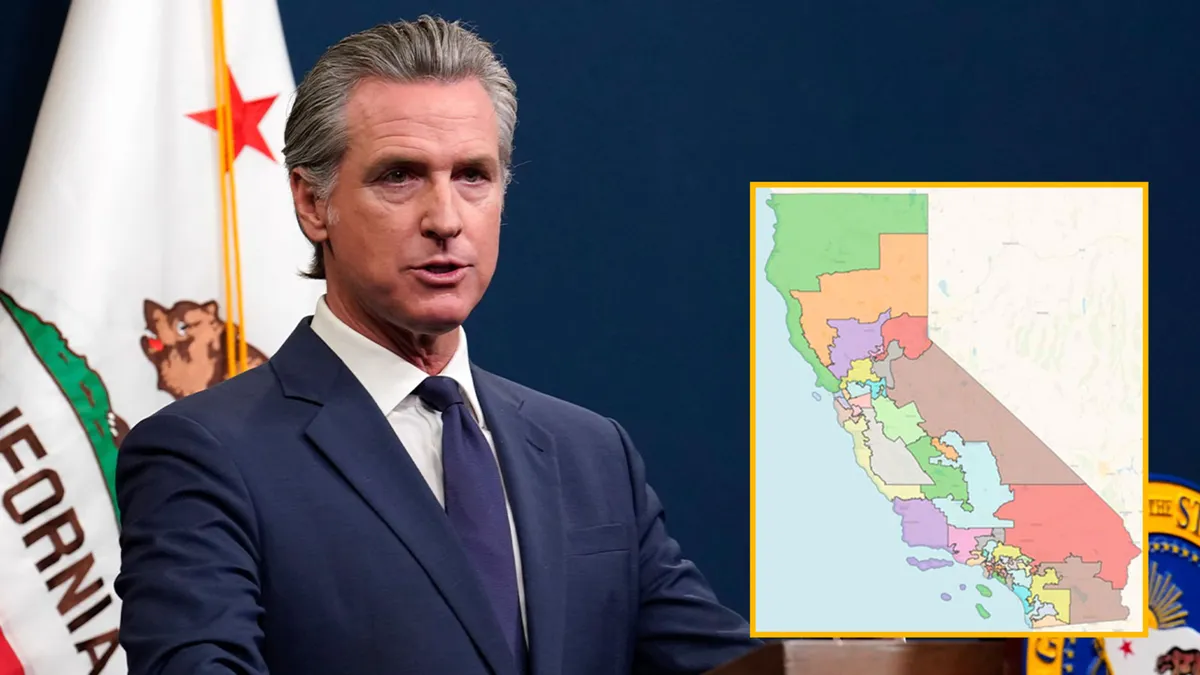
In a significant move demonstrating the Democrats' resolve to counteract Republican strategies, former President Barack Obama publicly endorsed Governor Gavin Newsom's initiative to redraw California's congressional map. This endorsement comes in response to the GOP's redistricting efforts in Texas, which could have profound implications for the upcoming midterm elections.
During a fundraiser for the Democratic Party's primary redistricting arm, Obama stated, "I think that approach is a smart, measured approach." His support underscores the urgency with which Democrats are addressing the current political landscape, especially given that the incumbent president's party typically loses congressional seats in midterm elections. Currently, the GOP holds a slim three-vote majority in the House of Representatives.
Trump's influence extends beyond Texas, as he has urged Republican leaders in conservative states such as Indiana and Missouri to also pursue aggressive redistricting measures aimed at creating additional Republican seats. Meanwhile, Ohio Republicans are already revising their maps in anticipation of potential gains.
California Democrats are considering reopening the state’s district maps, joining the redistricting battle that has intensified since the GOP's maneuvers in Texas. However, many Democratic-run states, including New York and Maryland, face constraints due to independent commission systems or other redistricting limits, complicating their ability to respond swiftly.
For instance, New York is unable to draw new maps until 2028, and even then, it would require voter approval. In contrast, Republican-controlled states often enjoy greater flexibility in redistricting practices.
As the national redistricting battle heats up, California Democrats are poised to approve a new congressional map on Thursday. This map aims to create five winnable seats for the Democratic Party, directly countering the Texas House’s approval of a map designed to favor conservative candidates. Governor Newsom's strategy is a calculated response to President Trump's redistricting directives.
Trump has urged Texas Republicans to alter the legislative maps established in 2021 to potentially gain five new GOP seats and avert a midterm defeat. In Texas, the maps require only approval from the Republican-controlled state Senate and the signature of Governor Greg Abbott to become official.
California's redistricting process faces a more intricate path. With a voter-approved independent commission in place, Newsom must garner a two-thirds majority in the legislature to pass the new map. Following this, a special election must be scheduled for November to obtain voter approval, with the governor needing to sign the map by Friday to meet ballot deadlines.
Newsom has emphasized the necessity of taking extraordinary steps to counter the aggressive redistricting tactics employed by Texas and other Republican-led states. "This is a new Democratic Party, this is a new day, this is new energy out there all across this country," Newsom remarked during a call with reporters, asserting the need to "fight fire with fire."
As California and Texas navigate the redistricting landscape ahead of the 2026 midterm elections, it’s essential to understand the concept of gerrymandering. This practice involves manipulating district boundaries to favor one party over another, often leading to distorted representation in Congress.
The term "gerrymander" originated over 200 years ago and describes the political manipulation in legislative map-making. In states where lawmakers have control over the maps, the ruling party can draw districts that significantly advantage their electoral prospects.
As the redistricting process unfolds, the implications for political power and representation in Congress are profound. The outcomes in California and Texas could set the tone for future elections, highlighting the critical role that district maps play in shaping the political landscape.
The ongoing redistricting battles in states like Texas and California illustrate the complex interplay of politics, population shifts, and legislative maneuvering. With midterm elections on the horizon, the stakes are higher than ever for both parties as they seek to secure their positions in Congress.